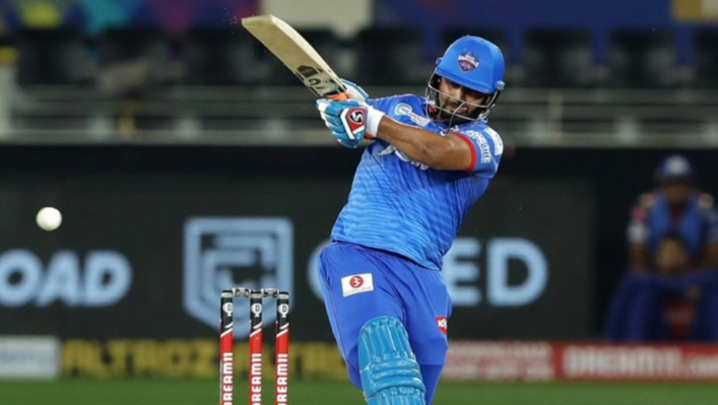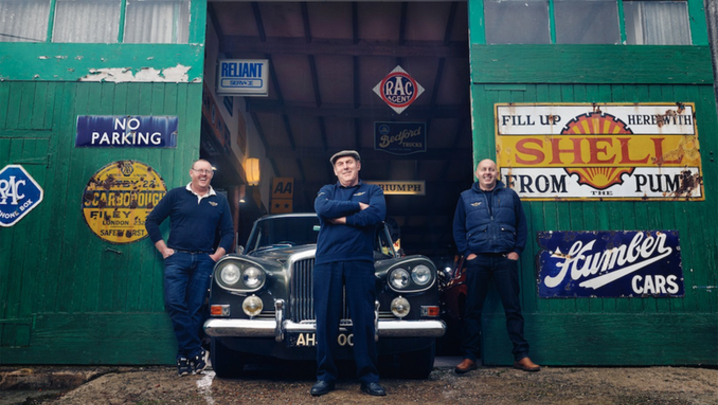From YouTube to UKTV, sports fans are watching a huge range of second-tier sports events for free. Ross Biddiscombe investigates.
There has never been a better time to own a second-tier sports event. While first-tier contracts generate mountains of cash – such as the three-year, £5.14bn deal for the English Premier League – it is the market for second-tier sports rights that is currently the most dynamic.
With darts on Dave, the Henley Royal Regatta on YouTube and talk of a Netflix for sports, there are many more ways to deliver live sport to a broadcast audience than the UK’s two pay-sports providers and their terrestrial rivals. Second-tier sports rights holders have a new kind of leverage, too, with potentially large, global audiences available online on platforms such as Facebook Live.
This year witnessed a major breakthrough with a new channel entering the sports arena. UKTV’s Dave had been mulling over an expansion into sport when former world heavyweight boxing champion David Haye offered the channel his comeback fight in January.
An astonishing peak viewing audience of over 3 million (more than four times Dave’s best-rating entertainment programme) prompted the channel to look at other sports.
A second Haye fight, broadcast on Dave in May, delivered a peak audience of 2.5 million. This was followed by the British Darts Organisation’s World Trophy event and Caribbean Premier League cricket.
The original sports opportunity caught the broadcaster by surprise. “We were contacted about five weeks before the fight,” says Richard Watsham, UKTV’s director of commissioning. “The call happened to coincide with our own thoughts about exploring doing live sport on Dave.
“The Haye camp wanted a free-to-air partner that would give the fight an entertaining coverage style. That fitted in with our own ideas.”
Haye also knew that, by avoiding the sports pay-TV options (his earlier fights were shown on Sky Sports Box Office), he was likely to attract a larger audience for a fight that, frankly, was never going to be on everyone’s radar.
The boxer said at the time: “Hopefully, my fights will keep being free for people to watch. I want to keep building the viewing figures and, obviously, get more sponsorship. The more the viewing figures climb, the more sponsorship gets involved and the less you rely on subscriptions.”
Second-tier rights owners have four basic broadcast options:
-
Follow the well-worn path to a sports pay-TV channel, with relatively low audiences but plenty of repeat showings and almost certainly no rights fee
-
A similar no-money deal with a free-to-air terrestrial channel that might deliver a larger audience, but fewer repeat broadcasts
-
A more adventurous partnership with an online platform such as YouTube, which offers a potentially big, global audience and a share of advertising; or
-
A mix of all three of the above.
Stephen Nuttall, senior director of YouTube EMEA, says the question for second-tier sports rights holders is this: why would they not have a channel on his platform?
“These days, YouTube is an option for rights holders large and small. We showed the Champions League and Europa League finals this year even though BT Sport was screening them as well. But, then, we also got the Henley Royal Regatta on screen for the first time in 33 years,” he says.
The coverage of Henley rowing in 2015 was a coup for YouTube. Moreover, thanks to the Henley Rowing Club committee paying many thousands of pounds to producer Sunset+Vine for such a high-quality production, this year’s competition was broadcast simultaneously on BT Sport.
“We have a partnership team that works with a rights holder and also with broadcasters,” explains Nuttall. “That way, there is an option for events to work on a number of platforms. We’re fine with that.”
Terrestrial networks such as the BBC and ITV are also innovating. Having lost almost all the crown jewels of sport, the BBC is turning to second-tier sports such as the triathlon or swimming for its quota of live action, especially following the November 2015 announcement of a £35m cut in its sports-rights budget.
Under its director of sport, Barbara Slater, the BBC is promoting these sports to new and potentially large audiences. “Competition for sports rights is increasing all the time,” she says. “We know how highly rights holders value the BBC’s huge reach. In 2015, while only accounting for 2% of all TV sports hours on UK television, we delivered a staggering 37% of all the viewing.”
"We are all about putting the fan in control: watching the sports they love, on the device of their choice."
The BBC and ITV can also offer second-tier rights holders valuable audiences via their online services. This summer, the BBC ran live streaming trials with British ice hockey and basketball matches, while ITV4 once again live streamed the Tour de France. The terrestrials’ websites are also attractive to second-tier sports: the BBC Sports website, for example, attracts 20 million unique users per week.
Second-tier sports rights holders naturally want big numbers of committed viewers. This is increasingly pushing them to online platforms.
Richard Ayers, CEO of leading European digital sports consultancy Seven League, says: “An engaged audience is what sponsors and the sports themselves want.… Surfing competitions can’t always start when a normal programming schedule wants them to because of the conditions in the ocean. An online site can alert fans virally and gather a large core audience very quickly.”
Pay-TV giants Sky Sports and BT Sport, meanwhile, will never abandon second-tier sports: they have hundreds of hours of airtime to fill.
Take sports such as speedway on Sky Sports or UFC mixed martial arts on BT Sport: the pay-channels can supply lots of on-air promotion and razzmatazz, and even some primetime slots. Sky also has Now TV, the online service that it launched in 2012, to help grow audiences.
While the rights holders will continue to look for income from sponsors or perhaps via a sports federation, the options for building audiences and revenues are expanding. Facebook Live formally launched this spring. It has already captured the imagination of the sports world. It works with video production and publishing platforms such as Grabyo.
"A 'Netflix for sport' concept is not too far away."
Gareth Capon, CEO of Grabyo, says that his clients include tier-one sports rights holders, such as Spain’s La Liga football champions Real Madrid. The club uses the online streaming option as a supplementary service: it showed the post-game Champions League celebrations online this spring.
By contrast, Formula E motor racing (for electric cars) has used Facebook Live as its primary broadcast option. “There are 30 million people accessing Facebook every day in the UK alone,” says Capon. “A sport like Formula E loves those numbers – and the fact that social media is a place that promotes notification and discovery of events.”
This shows how the pendulum of power for second-tier sports is drifting towards the holder, rather than the broadcaster – and that a “Netflix for sport” concept is not too far away.
Indeed, the UK-based media company Perform Group has already had that tag attached to its open-internet service DAZN, which it launched last month. The service is already available in Germany, Austria, Switzerland and Japan.
DAZN offers live coverage of the English Premier League, Germany’s Bundesliga and Spain’s La Liga plus more than 10,000 other live sporting events. These range from handball to darts. The service is available across any connected device for a monthly fee.
“We are all about putting the fan in control: watching the sports they love, on the device of their choice with one simple, affordable price and no long-term contract,” says John Gleasure, Perform’s chief commercial officer.
The DAZN business model rewards rights holders who drive the subscriber base and viewing levels. In other words, the deeper the penetration of a particular sport on DAZN, the more money that rights holders receive.
The growing choice enjoyed by second-tier sports, from triathlon to taekwondo, means this area of broadcasting is a whole new ball game.






